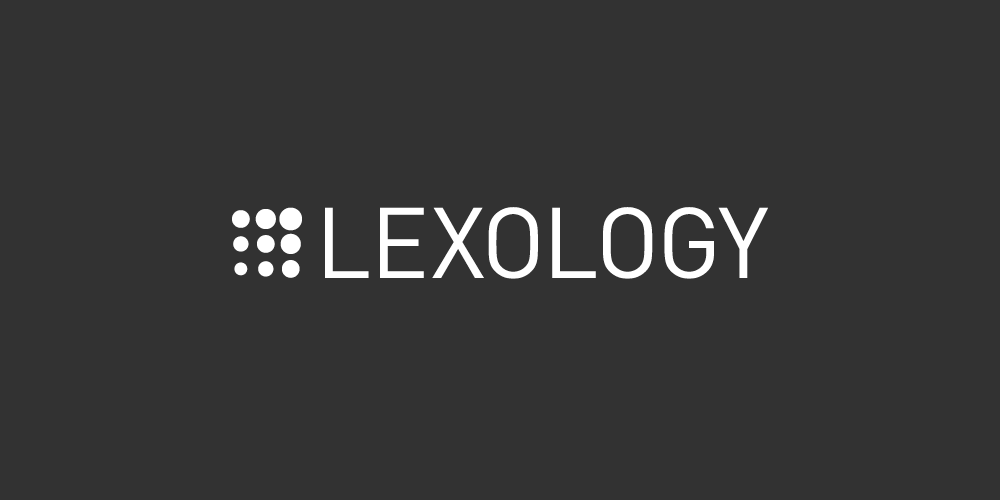Review your content’s performance and reach.
Become your target audience’s go-to resource for today’s hottest topics.
Understand your clients’ strategies and the most pressing issues they are facing.
Keep a step ahead of your key competitors and benchmark against them.
add to folder:
Questions? Please contact [email protected]
Non-Fungible Tokens (NFTs) are being touted as the next big thing in the digital world. The enthusiasts proclaim that NFTs are the future of digital property, and tokenization of assets has the potential to disrupt how digital (and in future, the real world) assets are acquired, owned, and transferred.
In law, the tokenization of real-world assets has a long history. A negotiable instrument, bill of lading, deed of title, and security certificate each represents an asset and the rights and interest therein. They, therefore, qualify as tokens. Tokenization evolved to ensure safety, security, of the asset and convenience in transferring its ownership. The law too evolved keeping pace with these new forms of assets, and with the long-established customs of the trade, it provided the necessary conceptual framework for determining the rights and obligations of the parties.
In each of these cases, the token represents the proof of ownership of the underlying asset and the transfer of the token results in the transfer of ownership with all its incidents.
In this article, I examine whether NFT as a token meets the test.
The technology
The value proposition for NFT lies in its uniqueness, immutability, and exclusive ownership. Blockchain technology enables these features. Blockchain is a database which no one entity controls, and subject to protocol, anyone can make an entry on it. A new transaction (or entry) can be entered on a block. A new block is created through the mining process (or minting). Once the transaction is complete, the block is closed. A new block is linked to the block preceding it. The information in each block in the chain is encrypted along with the information in the block preceding it into a mathematical representation called “hash”. The unique feature of “hash” is that the moment an input is changed, a new “hash” is created. So, any change in any of the blocks in the chain will change the “hash”. Thus, every time a new transaction is entered, the “hash” changes and the new transaction is revealed. This makes fraudulent transactions extremely difficult, if not entirely impossible. This gives the token its unique feature of being non-fungible or immutable.
There are two options for the storage of digital assets tethered to the NFT – on-chain and off-chain storage. In the case of on-chain storage, the digital asset is hashed and embedded into the token. And in the case of off-chain storage, the digital asset is stored elsewhere on a server, and the token is tied to it through a URL pointing to it. In such a case, the token only serves as a record of the terms of purchase and the URL for the digital asset.
In simple terms, NFT is an entry in a blockchain ledger which records right to an underlying asset. The rights and interests that the token represent are embedded in it and, at times, even the underlying digital asset (on-chain storage). Further, since it is based on distributed ledger (or blockchain) technology, the prior transactions involving it are recorded on the blockchain, and the provenance of its ownership can therefore be verified. Tokenization of an asset means creating a digital entry on a blockchain ledger which is tied or tethered to the asset being tokenized. The token is thus minted. Once a token is minted, it can be sold to any willing buyer on the same platform where it was minted or elsewhere.
Application of NFT technology
NFT, as we know it, came into vogue for digital assets, particularly digital art. NFT-enabled marketplace for digital art has opened a whole new world of opportunity for digital artists. An artist can tokenize his digital artwork and sell it to a collector, who can sell it to other buyers if and when the value appreciates.
There is a flourishing market for tokenized digital collectables – the first tweet of Jack Dorsey, a memorable moment in a sports event, musical composition or just a collectable fad like CryptoKitties.
NFT is also being used for physical (or real-world) assets. In such cases, the rights and interests created in the physical asset are embedded in the NFT. Tokenization, in such a case, enables digital transfer. Since it is on a blockchain, there is an added advantage of the ability to verify prior transactions and the provenance of the title. A physical item can thus be traded digitally, and a purchaser who wishes to take it in possession can redeem the token. Securities lend themselves very well to digital tokenization, as do negotiable instruments.
Tokenization has the potential for application in the real estate market (and dispense with the need for title search), securities trading, documentary credit, commodities trading (through tokenization of bill of lading) and other commercial activities.
NFT websites represent that a purchaser acquires the NFT and the ownership of the underlying asset. They make specific representation regarding acquisition of ownership of NFT (and implicitly the asset tied to it) andits unrestricted transferability.
Concept of ownership
Ownership is a bundle of rights. It is “a right [over a thing] indefinite in point of user, unrestricted in point of disposition and unlimited in point of duration”. An owner has the right in perpetuity to use the thing that he owns in the manner he chooses and dispose of as he pleases. It can be absolute or limited by prior encumbrances.
NFT as medium of transfer of ownership
When a person buys an NFT, he would like to believe that he owns the token and the title to the underlying asset without encumbrance. He is free to sell it to any willing buyer for the value he negotiates, or the market determines, and the seller has no control over the further sale. However, is it really so?
NFT platforms promote NFT as proof of ownership of the underlying asset. The creation of NFT and the rights annexed to it are, however, governed by the terms of service of the NFT platform where it was created.
In reality, the rights acquired by the purchaser fall far short of legal ownership with all its incidents described above due to the terms of service of these platforms and the control they exercise over the NFT because of the nature of the technology.
In a paper published in the Florida Law Review, the authors reviewed the terms of service of eight NFT platforms. They concluded that:
Though the website disclaims control over the token, the terms of service enable the website to block access to the token created. The terms of service also enable the website to remove digital assets in some instances.
The terms of service do not provide a direct link between the token and the underlying asset. In the case of digital artwork, the terms of service impose restrictions against commercial use.
NFT does not grant intellectual property right in the underlying creative work.
The authors concluded that NFTs do not embody the property rights of the reference asset. They found that the claims made by the NFT platforms in that regard were often confusing and in conflict with their terms of service. There was a complete lack of clarity regarding the linkage between the NFT and the underlying asset. In the case of off-chain storage of underlying assets, the linkage is further weakened due to the purchaser’s lack of control over the storage.
Historically, tokenization worked because there was an elaborate legal framework to support it. It is the law which created the linkage between the token and the underlying asset. For example, the bill of lading embodies the title to the goods because the law recognizes it. There is no such legal framework for NFT. The contractual framework under which NFT is created does not fill that gap. On the contrary, as described above, it adds to the confusion and, thus, creates more uncertainty.
However, the fact remains that NFT, despite its legal flaws, is becoming mainstream for digital assets. It urgently needs a legal framework for it to succeed.
Arguably the existing law can be retrofitted to provide such framework. Indian law does recognise intangible asset as a form of property. Therefore, the laws governing the sale of goods and transfer of property can provide the necessary framework. However, the law must first recognise NFT as personal property which is a challenge. The NFTs, as currently constituted and on offer, provide weak linkage to the underlying asset. They are closer to a bundle of contractual rights in relation to it, rather than its representation in form of a token.
This article was first published at https://www.legaleraonline.com/nfts/nft-as-property-a-legal-analysis-844259
add to folder:
If you would like to learn how Lexology can drive your content marketing strategy forward, please email [email protected].
© Copyright 2006 – 2022 Law Business Research


